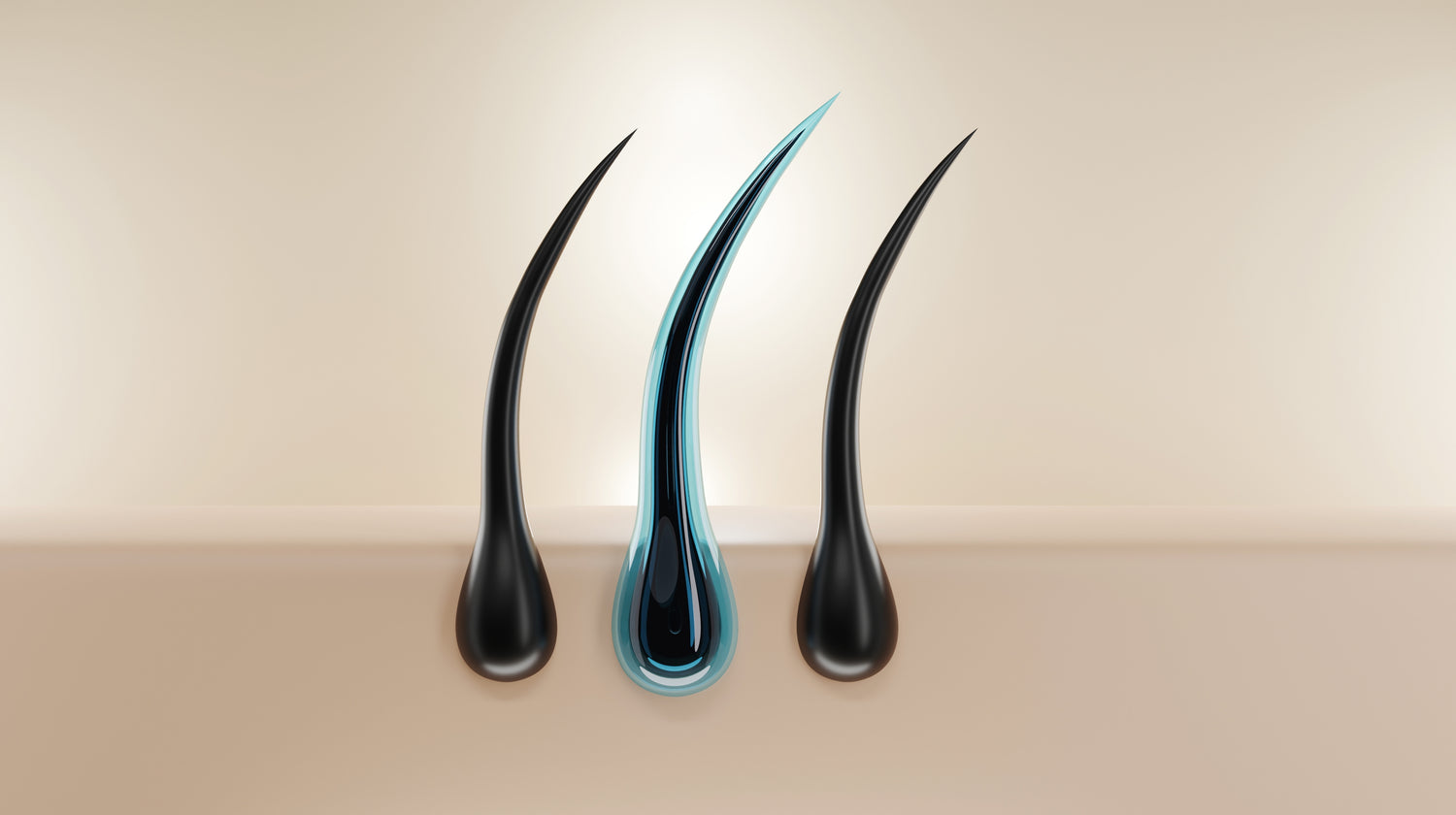Hair health
Our hair is often considered a reflection of our overall health, and so it is essential to give it the attention it deserves.
At Royal, hair health is at the heart of our values.
All repeated actions can have a short and long-term impact on the appearance and health of the hair. So it’s better to have good hairdressing habits!

FOR HEALTHY HAIR
Hair is made up of proteins, mainly keratin. Their health depends on several factors, including genetics, environmental and our care habits.
Unfortunately, hair can become damaged quickly and takes a long time to repair.
HAIR TRICKS
-
BASIC INFORMATION
- You need to know your hair type (fine, thick, curly, straight, wavy)
- You need to know your scalp type (dry, oily, sensitive)
-
THE SHAMPOO
- Make 2 shampoos: the first removes excess sebum, the 2nd does the action (volume, smoothing, moisturizing, etc.).
- Concentrate the shampoo at the roots and not the ends.
- Use a shampoo suited to your hair type and scalp.
- Avoid washing your hair too often.
- Do not wash hair with too hot water.
- Rub the scalp with straight and non-circular movements to avoid knots.
-
THE MASK
- Apply a mask after shampooing.
- The mask does not replace the conditioner. Apply conditioner afterwards.
- Leave the mask to act for 1 minute. at 30min. as required.
- Do not apply it at the root; only in lengths.
-
THE CONDITIONER
-Apply the conditioner at the very end, along the lengths.
- Do not apply at the root.
- Leave to act for 1 min to 5 min.
- Rinse hair with lukewarm or cold water.
-
DRY THE HAIR
- Do not rub hair with a towel, wring out gently.
- Do not make a turban with the towel that is too tight so as not to tear out the small hairs around the face.
-
DRYING
- Apply Royal hair care spray to wet hair, it acts as a detangler and thermal protector.
- Let the hair air dry as much as possible.
- Avoid drying your hair upside down, the scales could close poorly.
-
STYLING
- Use hairdressing tools in good condition, clean and suitable for hair types.
- Use good quality hairdressing tools.
- Do not put the iron beyond 380 degrees.
- Detangle hair before ironing.
- Do not iron several times, 1-3 times per strand is sufficient.
- Use the right type of hairbrush.
- Take smaller strands with the iron for a better result.
- Brush the hair gently from the ends.
-
THE HAIR HABITS
- Do not sleep with wet hair, this will tear it out and damage it.
- It is best to sleep with a silk or satin pillowcase. This reduces knots, static and makes the skin breathe.
- Cut the ends regularly.
- Use a hairdressing professional.
- Avoid playing with your hair.
- Avoid putting dryer sheets in the dryer with towels. Its highly chemical leaves put a waxy layer on the hair.
- Massage the scalp for at least 2 minutes per day to promote blood circulation.
- Eat healthily and drink plenty of water, hair health comes from within.
- Take supplements such as collagen and fish oil (omega-3).
-
PRODUCTS
- Avoid oil baths, this only greases the hair without penetrating the fiber and without deeply hydrating it.
- Check the expiration date of the products.
- Make sure you have products suited to your hair type.
- Don't insist on finishing a product you don't like.
- Store and reseal hairdressing products properly.
- Use professional hairdressing products and avoid mass market products with low quality ingredients.
- Avoid products with paraben, sulfate, silicone, abrasive salt and phthalates.
-
THE ACCESSORIES
- Do not tie your hair too tightly, use barrettes or hair accessories that can tear or damage the hair.
- Have hair ties made of satin or soft fabrics for the hair, without a metal tip.
- Pay attention to the types of hair extensions (application and type of installation).
- Avoid putting an accessory in the same place every day.